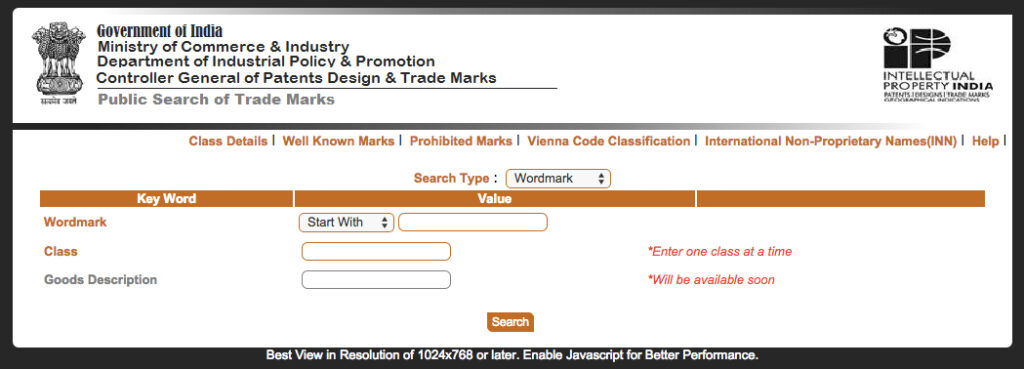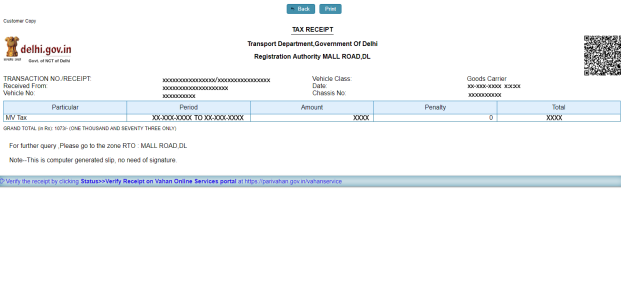Trademark Class Search
A Trademark is an important identity for every business. However, trademark registration involves registering the design under the proper classes of trademark. What is Trademark? A trademark is an intellectual property that grants the owner exclusive rights over a word, symbol, logo, phrase, design, sound, or expression. Such a trademark cannot be used by any other individual, entity, or organization in the public domain without the trademark owner’s consent. Any copying of the same shall lead to legal action. A trademark has the ability to distinguish one company’s products from others. What is Trademark Class? A trademark class refers to the classes in which various products and services are divided under the NICE classification. There are 45 trademark classes. Each class consists of goods and services of a particular nature. While applying for a trademark, the applicant has to select the correct trademark class to which his/her product or service belongs. Trademark class plays a crucial role in trademark search and in preventing trademark infringement. What is the basis of the Classification of Trademark Classes? Trademark Class for Goods A finished product is classified on the basis of its purpose and function if the product is not a part of any other class. Multipurpose products can be classified into multiple classes that relate to their functions. If the functions are not mentioned in other classes, then it is classified on the basis of the mode of transport or the raw materials. Raw materials or semi-finished products are classified based on the material they are made of. If the product is made of multiple materials, it is classified on the basis of the predominant material. Trademark Class for Services Trademark class for services is classified on the basis of branches of activity, as specified in the headings and explanatory notes. Rental services are classified in the same class. Advice or consultation-related services are classified based on the subject of the advice, consultation, or information. What are the Different Trademark Classes? Class Description Trademark Class 1 Chemical industry, science, photography, agriculture, horticulture, and forestry; unprocessed plastics; chemical substances for preserving foodstuffs; Trademark Class 2 Preservatives against rust, paints, and varnishes; Preservatives used to prevent deterioration of wood, foil, and powder from metals, colorants, painters, artists, and decorators. Trademark Class 3 Substances for laundry use, bleaching preparations; cleaning; polishing; essential oils, cosmetics, soaps; perfumery, abrasive preparations; hair lotions; Trademark Class 4 Industrial oils and greases; candles, wicks; lubricants; fuels and illuminants, dust absorbing, wetting and binding compositions. Trademark Class 5 Pharmaceutical, fungicides, herbicides; veterinary and sanitary preparations; food for babies; disinfectants; dietetic Trademark Class 6 Common metals, alloys; small metal hardware products, building materials made of metal. Metal pipes and other goods which are not a part of other classes. Trademark Class 7 Machines and machine tools; machine coupling and transmission equipment; agricultural implements except those operated by hand; incubators for eggs Trademark Class 8 Manual hand tools and implements; side arms; razors; cutlery Trademark Class 9 Scientific, measuring, apparatus for recording, electric, photographic, data processing equipment and computers; transmission or reproduction of sound or visuals. Trademark Class 10 Dental and veterinary products; surgical, artificial limbs; medical, eyes and teeth; suture materials; orthopedic articles. Trademark Class 11 Apparatus for lighting, cooking, refrigerating, heating, steam generating, water supply and sanitary purposes; drying and ventilating. Trademark Class 12 Vehicles; products for movement by water, land, or air. Trademark Class 13 Firearms; explosives; fireworks; ammunition and projectiles Trademark Class 14 Precious metals, their alloys and products made from them; precious stones; jewelry; chronometric instruments and horological Trademark Class 15 Instruments used to make music. Trademark Class 16 Printed matter; stationery; Paper, cardboard, and goods made from these materials; brushes; plastic materials for packaging; typewriters and office requisites; Trademark Class 17 Insulating materials; flexible pipes; rubber, asbestos, plastics in extruded form for use in manufacture; mica and goods made from these materials; packing, stopping Trademark Class 18 Umbrellas, parasols and walking sticks; leather and imitations of leather; animal skins, hides, trunks and traveling bags; whips, saddlery; harness Trademark Class 19 Building materials, (non-metallic), non-metallic transportable buildings; non-metallic rigid pipes for building; asphalt, pitch, and bitumen; monuments. Trademark Class 20 Furniture, mirrors, picture frames; ivory, whalebone, shell, amber; goods of wood, cork, bone, mother-of-pearl, reed, cane, wicker, horn. Trademark Class 21 Kitchen utensils; unworked or semi-worked glass; combs and sponges; articles for cleaning purposes; earthenware and glassware Trademark Class 22 Awnings, tarpaulins, sails, sacks, ropes, string, nets, tents, raw fibrous textile materials; padding and stuffing materials(except of rubber or plastics) Trademark Class 23 Yarns and threads Trademark Class 24 Bed and table covers; Textiles Trademark Class 25 Clothing, headgear, footwear Trademark Class 26 Ribbons and braid; Lace and embroidery, buttons, artificial flowers; hooks and eyes, pins and needles Trademark Class 27 Carpets, rugs, wall hangings(non-textile); mats and matting, linoleum Trademark Class 28 Gymnastic and sporting articles; games and playthings; decorations for Christmas trees Trademark Class 29 Meat, fish, poultry and game; meat extracts; preserved, dried and cooked fruits and vegetables; jams, edible oils and fats; fruit sauces; eggs, milk and milk products Trademark Class 30 Coffee, tea, cocoa, sugar, rice, tapioca, mustard; vinegar; spices; ice sago; bread, pastry and confectionery, ices; honey, treacle; yeast, baking powder; salt Trademark Class 31 Agricultural, horticultural, and forestry products and grains; foodstuffs for animals, malt; live animals; fresh fruits and vegetables; seeds, natural plants and flowers Trademark Class 32 Beers, mineral and aerated waters, non-alcoholic drinks; syrup; fruit drinks and fruit juices Trademark Class 33 Alcoholic beverages(except beers) Trademark Class 34 Tobacco, smokers’ articles, matches Trademark classification of services Class Description Trademark Class 35 Advertising, business administration, business management, office functions. Trademark Class 36 Insurance, financial affairs; monetary affairs; real estate affairs. Trademark Class 37 Building construction; installation services; repair Trademark Class 38 Tele communications. Trademark Class 39 Transport; travel arrangement; packaging and storage of goods. Trademark Class 40 Treatment of materials. Trademark Class 41 Education; entertainment; sporting and cultural activities; providing of training Trademark Class 42 Scientific, design, and
Trademark Class Search Read More »








